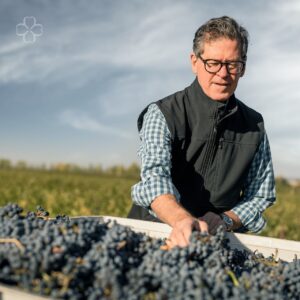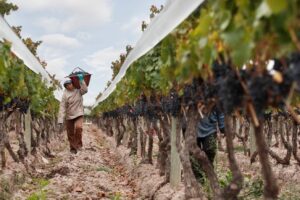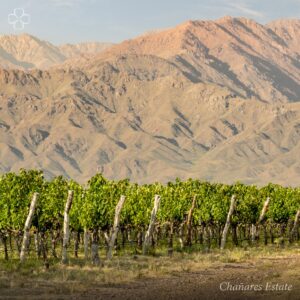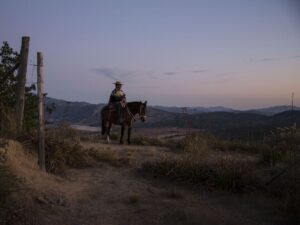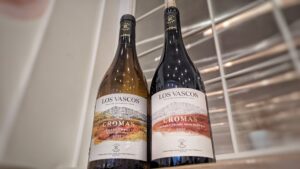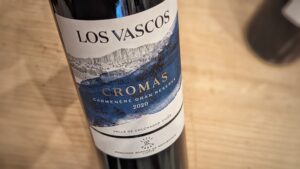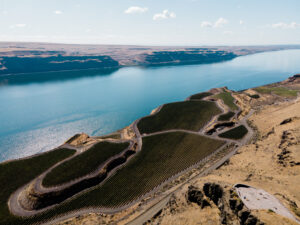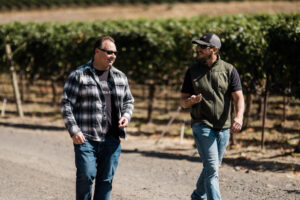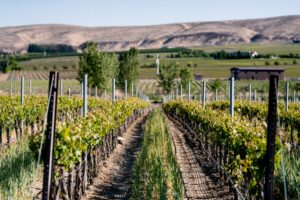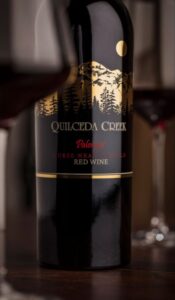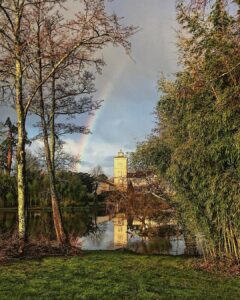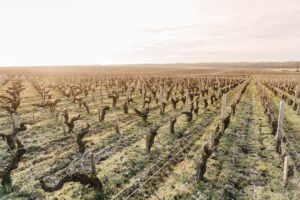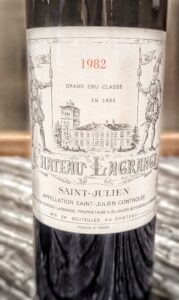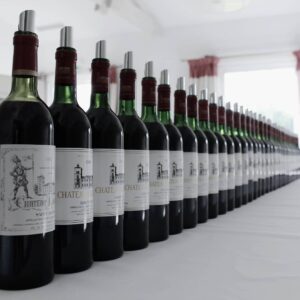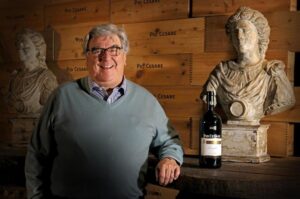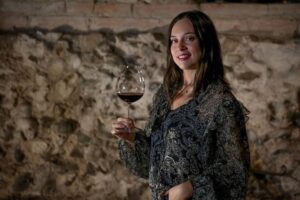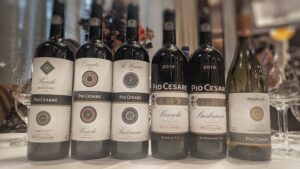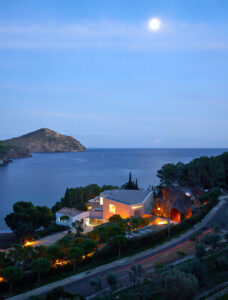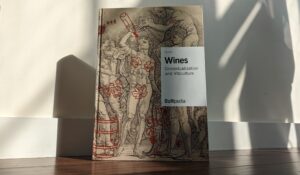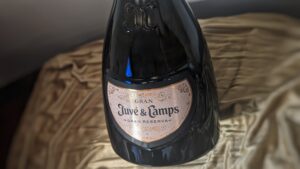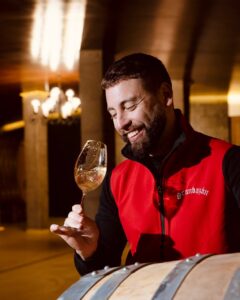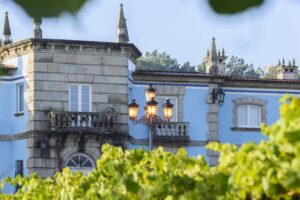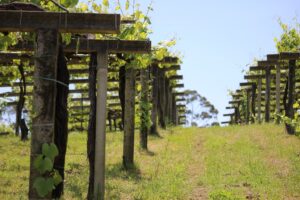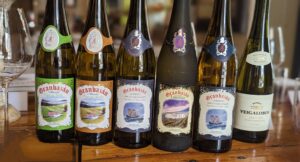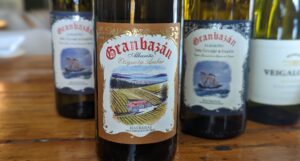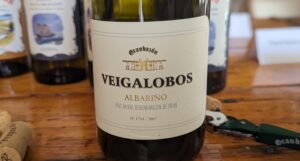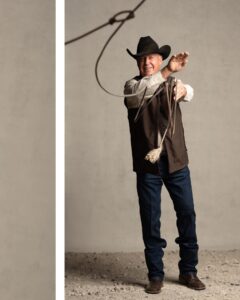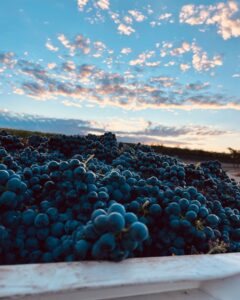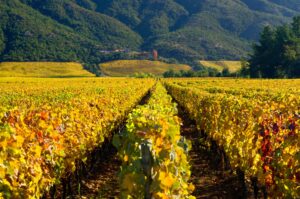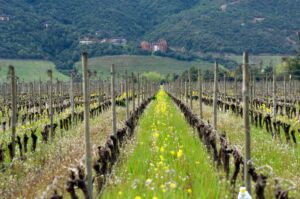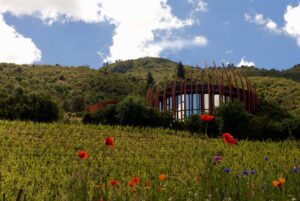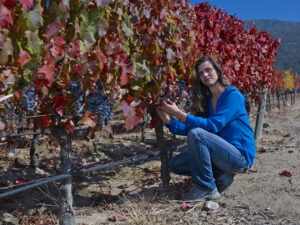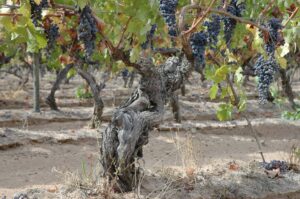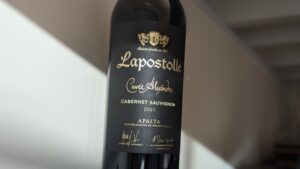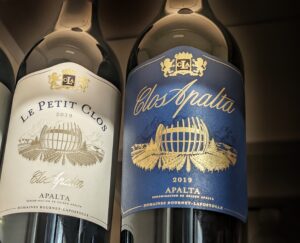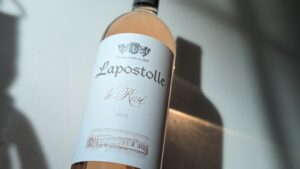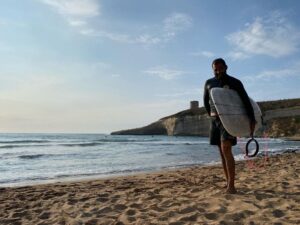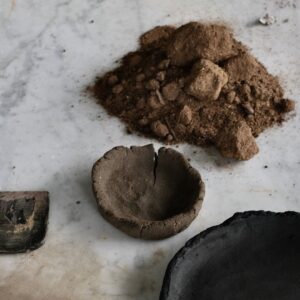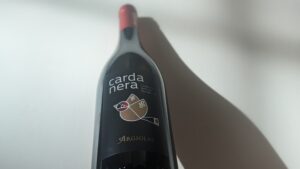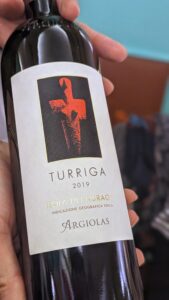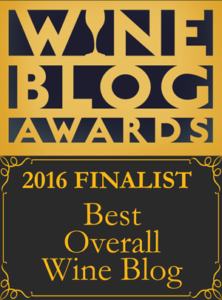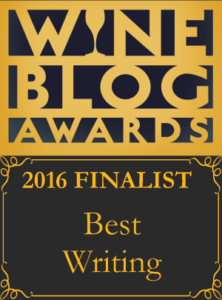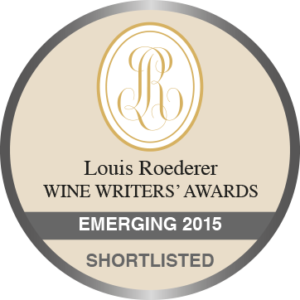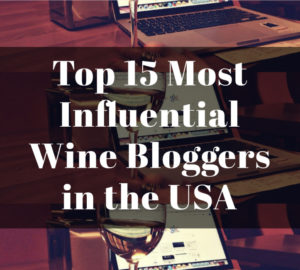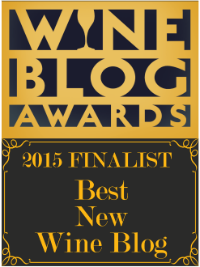As the sun was rising in the distance, the peaks of the mountains looked like gigantic, mythical waves frozen in time. The multifaceted colors of these behemoths had a primary palette of terra cotta in the sunlight with patches of navy blue and touches of dark purple with an enchanting dusting of white snow. As the California winemaker gazed upon the scene, half asleep, he felt that he must have been dreaming, laying in his bed in Sonoma County in a deep sleep, having the best dream of his life. But no, he quickly remembered that he had left it all behind, a chance of a lifetime no less, to pursue uncharted territory in South America, as the wines during that time were still struggling to build an export market. He was in his mid-30s and he knew if there was a time to take a risky leap, leaving the comfort of a great job in a stable economy for the unknown, it was either at that moment or never.
But he could have never imagined that instead of his original plan to travel to Chile, the only known South American wine country in the U.S. during the 1980s, that he’d go to Argentina instead, where most of the wines were drunk domestically during that time. Whenever he would talk to people in the wine world back home in the U.S. about Argentina, they would say, “That’s in Chile, right?” not knowing that it was its own country.
Yet this young man, Paul Hobbs, went to Argentina in 1988 and found his place working for a multi-generational wine-producing family, and eventually, he would become a key figure in producing the fantastic Argentinian Malbec wines that would become popular globally. Today, he has taken the next step in making a single vineyard Malbec that expresses a unique sense of place and he is also finding that Cabernet Franc is thriving in particular vineyards as well.
Argentina Malbec
One of his contacts from U.C. Davis in California, Paul Hobbs’ alma mater, connected him with a gentleman from Argentina named Jorge, and so, when it came time for Paul to make that fateful trip to Chile, he thought it would be a good idea to invite Jorge as Paul didn’t speak Spanish at the time. Unfortunately, he didn’t know he was committing a major faux pas with the man hosting him in Chile, as he was ignorant of the complicated relationship that Chile and Argentina had with each other in 1988. So, his Chilean host told Paul to get rid of Jorge, which he tried to do, but little did Paul know at the time that Jorge had no intentions of leaving his side because he wanted to convince him to work in Argentina. The Chilean host kicked them both out, leaving Jorge the opportunity to drive Paul through the Andes Mountains into Argentina.
At that time within the wine world, Argentina had a lousy reputation for inferior wine which was due to political instability, making it impossible for them to participate in international trade over many decades. Their winery equipment was outdated, leaving much of their wine to oxidize. Since the wine was made mainly for local consumption, they didn’t bother bottling it and it was sold very cheaply in bulk. But the second Paul saw his first vineyard in Argentina, he was astonished by what he saw as there were rocky soils that would give enough drainage to create healthy roots and enough stress for quality vines. Also, he was utterly shocked that much of the vineyards were high-density plantings, which creates competition for minerals, creating a bit of stress that places enough energy into the development of the fruit and not too much into the canopy of the leaves. Argentina may have been backward regarding the wineries and cellars but they had a multitude of great vineyards that were ideally planted for quality wine.
His companion, Jorge, not only came from an Argentinian multi-generational wine-producing family but he came from the Catena family. They had been wine pioneers for around a century, and today, they are considered the royal wine family of Argentina. The day after Paul arrived in Argentina and surveyed the vineyards, Jorge flew him to Buenos Aires to meet his older brother Nicolás Catena, who today is a living legend in the wine world, and there they began their partnership.
Paul started to develop a program at Catena that significantly improved winemaking but also the overall management of the vineyards. “I was essentially that year in a learning situation,” admitted Paul, as he knew very little about Malbec and the vineyards of Argentina, and since there had been no significant viticulture research, he was starting from scratch. So, he used what he knew from his training and his time in California. They began to improve vineyard management by using less irrigation, opening the canopy for better aeration and sunlight exposure – as the fruit was placed in a sort of cocoon because of the hail storms in many areas of Argentina, and finally, pushing to get better pay for the growers as they needed to be paid for expending more effort to make quality grapes.
Even though Paul already saw a tremendous amount of potential in the vineyards he visited in Argentina, he was further excited to notice that they had higher elevation land on the foothills of the Andes to plant vineyards that would get cooler weather yet with all the benefits of a dry, warmer region that includes low disease pressure and plenty of sunshine. But it was no easy task, as Argentine agronomical engineers, what they were called back then, thought the idea of planting in the foothills of the Andes was crazy. Yet he persisted, eventually getting Catena to plant the “first high altitude, high-density planting ever in Argentina” which they called Domingo after Nicolás Catena’s father. Paul notes that starting in the mid-1990s, many people, even the Europeans, started looking into planting vines in the wine region of Uco Valley in Mendoza, where the Domingo vineyard was located. “We had a massive expansion that created the Valle de Uco [Uco Valley] as we know it today,” said Paul.
But one of the reasons that Paul wanted to come to South America, especially as the son of a farmer, was that he wanted to have his own vineyards and make his own wine. So he left Catena to start his venture, Viña Cobos.
Viña Cobos
Paul founded Viña Cobos in 1998 with Andrea Marchiori and Luis Barraud and his partnership with this married couple was extremely fortunate as the company might have folded without them. Paul wanted to learn more about how old vine Malbec would express different terroirs, sense of place, because affinity for terroir expression is one of the markers of a high-quality grape variety. This project would source old vines in Mendoza, Argentina, from a few key areas to show the differences between these terroirs.
Unfortunately, since Paul and his partners were a small company with very limited resources, only $70,000 to start a capital-intensive business, their grapes were often sold out from under them to bigger wine companies with a lot more money. They would have an agreement with growers to buy their grapes as long as they employed practices for growing quality fruit, which was unnerving for the growers as they were sacrificing quantity for quality; since Viña Cobos had very little capital, the growers were already nervous. So even though agreements were in place, once Paul and his partners showed up at the vineyards to collect their grapes, they found out that their grapes were sold to one of the big companies, as the growers didn’t even bother to let them know that they had already sold the grapes. But Paul completely understands the growers’ desperate situation, yet it placed his tiny company, barely hanging on, in a tenuous position until his partner Andrea Marchiori’s father said they could use his vineyard, Marchiori estate. The vineyard is located in the well-known wine sub-region of Luján de Cuyo, and they would be allowed to implement extreme practices to achieve the most excellent fruit quality possible.
And so, the initial plan for Viña Cobos had to change; hence, instead of making a single vineyard comparison between a few different plots of old vine Malbec, they made premium entry-level to mid-level priced wines that were incredible expressions of Mendoza as a wine region. And those wines have sustained Viña Cobos till this day and contributed to the love for Argentina Malbec.
But finally, Paul has been able to return to his original dream of making the case for Malbec as a noble grape. First, he has released a bottling called ‘Vinculum’ that showcases the best grower fruit from that vintage. Another way that Paul has helped increase the quality of Malbec wine was to set up a new way of paying growers, which is unheard of. He sets the price upfront with them via a contract instead of waiting for the wine critics’ appraisal of the vintage to set the price; he even gives prepayments to the growers. That way, they have some money upfront to do the costly practices to grow the highest quality fruit and be guaranteed a very good price no matter how the critics sum up the overall vintage. Since Paul was raised on a farm, he knows that not getting enough money for any harvest can make or break a grower.
And so, across the board, they can bring in the best quality. Yet, Paul has added some fun into the mix by introducing a contest for their ‘Vinculum’ bottling, where the best two or three growers that year are used in that bottling. The selected growers are announced at a party that Viña Cobos puts on to bring all the growers together, celebrating the glorious vineyards of the famous sub-regions of Mendoza: Luján de Cuyo and Valle de Uco.
The other project involves vineyard designate bottlings of not only the Malbec grape but also the Cabernet Franc grape.
Single Vineyard Cabernet Franc
Paul now makes single-vineyard bottlings from the following vineyards: Hobbs Estate (Luján de Cuyo), Zingaretti Estate (Valle de Uco), Marchiori Vineyard (Luján de Cuyo) and Chañares Estate (Valle de Uco), and interestingly Chañares Estate is located near where Paul oversaw the planting of Catena’s Domingo vineyards all those years ago.
Chañares Estate was purchased by Paul 10 years ago. Still, he didn’t do the initial planting of the vineyard as it was originally done by three professors from the University of Mendoza. Surprisingly, these professors placed pyramids with stones inside to pull energy from the cosmos, something that one would never expect professors to do. Yet Paul says that they were ingenious in a way, as they left “natural zones,” leaving plants and trees and clearing paths around various sections of the vineyard that allow water to drain away. Since the vineyard is almost 4,000 feet on the foothills near the Andes Mountains, it can receive heavy rains, so the pathways allow the shower to wash away. Another benefit is the lack of hail storms since the storms “don’t really form this deep into the Andes,” as Paul notes. They are further down the slope, allowing him to avoid using hail nets, which he feels can sometimes get in the way of growing high-quality grapes.
Also, this vineyard has lots of rocky, stony soil encrusted with limestone. Even though the vines are only around 12 to 14 years old, their extremely thin root hairs go down over three feet, and because the root hairs are so thin, they can “glean very fine micro-nutrients,” which gives a distinctive sense of place to this vineyard. They have own-rooted Malbec, Cabernet Sauvignon and Cabernet Franc vines planted in the vineyard, and funny enough, Paul says that despite Cabernet Sauvignon being known as a hardy variety that can grow almost anywhere, it doesn’t perform well in the Chañares Estate. Yet, Cabernet Franc shines in this vineyard. Even though Cabernet Sauvignon is more widely recognized, the stunning quality of the Cabernet Franc is undeniably excellent so he will replant the Cabernet Sauvignon with either Cabernet Franc or Malbec. He is hoping that Cabernet Franc’s popularity will grow among wine drinkers down the line, and notes that once these vines reach 20 to 25 years old, they will hit their peak and stride in quality.
The American Dream
A brilliant young winemaker who was raised on a small family farm in upstate New York not only became the winemaker of a well-respected winery in Sonoma County but then, once the LVMH conglomerate purchased it, he was part of the most influential company specializing in luxury goods. He earned more than he could have ever dreamt and traveled the world, spending time in some of the most impressive headquarters worldwide. But it felt wrong over time; he was spending more and more time in boardroom meetings and participating in executive activities than in the vineyards. Was he crazy to even fathom the very thought of leaving? Did he not appreciate an opportunity that many would have died for?
Or maybe it is lucky to know oneself early enough to do something about it and knowing that sitting in the most luxurious offices in the world and owning expensive things will never fulfill someone who craves to be out in the vineyards, hands in the soil, working side by side with those who feel the same pull towards the land.
As he gazes out of a gorgeous window with a jaw-dropping view during another board meeting, all he can see are those vineyards in his mind, and he wonders about vineyards in undervalued places in other exciting areas of the world. So he takes that leap to trade one American dream for a completely different one; creating a dream that didn’t even exist in reality, to make great wine in South America.
***Link to original Forbes article: https://www.forbes.com/sites/cathrinetodd/2024/01/26/wine-pioneer-of-top-malbec-wine-in-argentina-releases-cabernet-franc-fine-wine/

Photo Credit: Cathrine Todd
Paul doesn’t like fining his wines as he believes it “clips their wings,” and he wants his wines to be free to “fly.”
2019 Viña Cobos, ‘Vinculum’ Malbec, Mendoza, Argentina: 100% Malbec from the best Viña Cobos growers selected for the 2019 harvest, 82% comes from Valle de Uco and 18% comes from Luján de Cuyo. Elegant nose with blackcurrant, touch of fresh herbs and violets with an underlying note of crushed rocks with silky tannins and subtle fruit and spices on the palate that has an overall quality of pure finesse.
2019 Viña Cobos, Vineyard Designate Chañares Estate, Malbec, Uco Valley, Mendoza, Argentina: 100% Malbec from the Chañares vineyard, located 3,888 feet above sea level. Deep color with ruby core and purple edge that telegraphs the rich blueberry and plum pie flavors that are delectable with a mouth-filling lush texture balanced by vibrant acidity and savory notes such as wild thyme with a long, flavorful finish.
2019 Viña Cobos, Vineyard Designate Chañares Estate, Cabernet Franc, Uco Valley, Mendoza, Argentina: 100% Cabernet Franc from the Chañares vineyard, located 3,888 feet above sea level. Complex layers on the nose that are extremely intriguing with tree bark, dried wildflowers and an intense chalky minerality with ripe black cherry fruit on the palate that is shaped by finely etched tannins that give drive to this wine, finishing with a saline quality that is spectacular.

